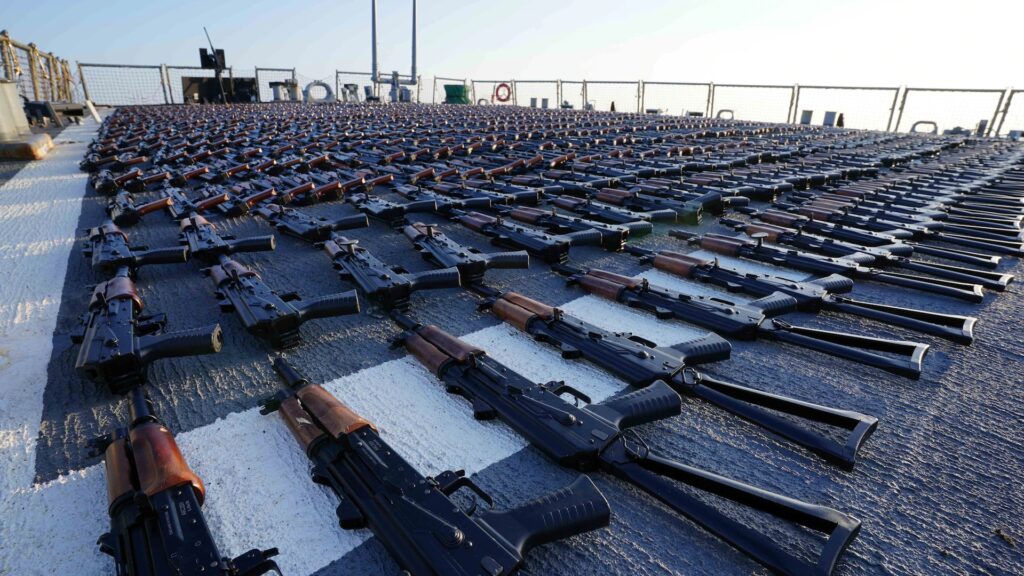
*******
ARLINGTON, Va. — An interconnected mesh of sensors and unmanned systems could provide better maritime security in the Middle East than any single Navy could, the head of U.S. Central Command (CENTCOM) naval forces says.
“No Navy acting alone can possibly protect against all the threats,” Vice Adm. Brad Cooper told an audience Jan. 10 at the Surface Navy Association’s 2023 National Symposium. “The region is simply too big,” he said.
Maritime Security in the Middle East
CENTCOM’s maritime area of responsibility includes the Arabian Gulf, Gulf of Oman, Red Sea, parts of the Indian Ocean and three critical choke points at the Strait of Hormuz, Bab al-Mandeb, and Suez Canal.
“Threats emanating from Iran are very real and they have our attention,” said Cooper, who is also commander of the Navy’s 5th Fleet and Combined Maritime Forces, citing incidents last year and as recently as Jan. 7, 2023.
In late August, the Navy prevented a support ship from Iran’s Islamic Revolutionary Guard Corps Navy from capturing an unmanned surface vessel operated by the 5th Fleet in the Arabian Gulf. A Nov. 15 aerial drone attack on a Liberian-flagged commercial tanker transiting international waters in the Middle East, was identified as a Shahed-136 UAV; the same aerial drone Iran has supplied to Russia for use against Ukraine.
On Jan. 7, U.S. naval forces seized more than 2,000 AK-47 assault rifles from a fishing vessel transiting along a maritime route from Iran to Yemen.
The vessel was sailing on a route historically used to traffic weapons to the Houthis in Yemen. A team from the Cyclone-class patrol ship USS Chinook ship boarded the vessel with support from the Cyclone-class patrol ship USS Monsoon and the guided-missile destroyer USS The Sullivans, according to CENTCOM.
Strengthening Partnerships
The most effective way to monitor the region’s waterways is through strengthening partnerships with other navies and accelerating innovation, Cooper remarked. A good example of that strategy was Digital Horizon, a three-week unmanned and artificial intelligence event in Bahrain.
During Digital Horizon, which ended Dec. 15, Task Force 59 leveraged artificial intelligence to create an interface on one screen, also called a “single pane of glass.” The screen displayed relevant data from multiple unmanned systems for watchstanders in Task Force 59’s Robotics Operations Center.
The task force was established in 2021 to rapidly integrate unmanned systems and artificial intelligence with maritime operations in the 5th Fleet area of operations. The task force also launched an unmanned aerial vehicle from a U.S. Coast Guard cutter for the first time. The launch enhanced Task Force 59’s ability to create a mesh network for unmanned systems to relay imagery to command centers ashore and at sea in a communications-denied environment.
- Shall We Play a Game? Winning Isn’t the Point, Experts Say - April 5, 2023
- U.S. Goal: Maintaining Extended Presence in Arctic’s Harsh Environment - April 4, 2023
- Joint, Combined Exercise Shows Marine Littoral Regiment Idea is on ”Right Track’ - February 24, 2023






